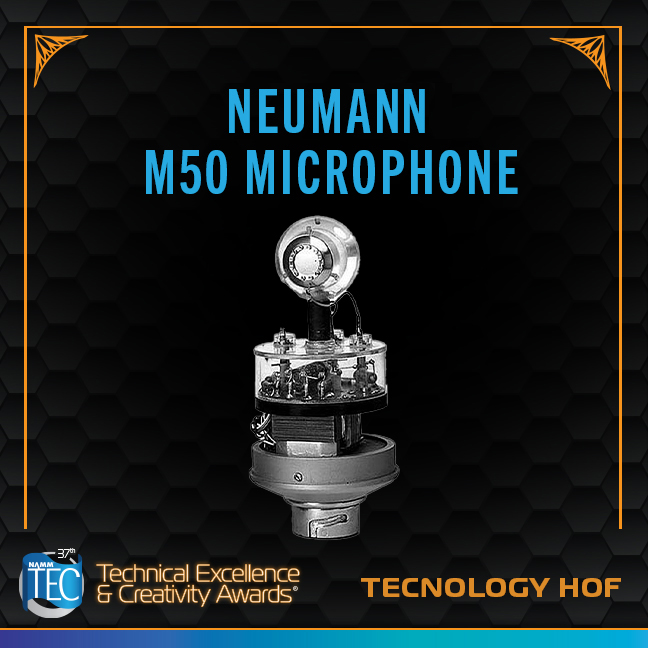At the same time that Neumann unveiled the M49 (its first remotely controlled microphone), the company also launched the M50, a single-pattern omnidirectional tube model designed specifically for the needs of classical music recording.
The M50 is unique among other microphones, as its small-diameter condenser capsule is located in the center of a clear, 4 cm acrylic sphere (shown here with the outer grill removed) which results in a rising, yet smooth high-frequency response (about +6 dB) from 8k Hz to 16k Hz, while the response is much flatter at lower frequencies. And while the mostly omnidirectional at lower frequencies, the M50 exhibits increasing directivity towards higher octaves.
In 1954, two engineers at London's Decca Records devised a creative solution for stereo recording. The result — which became known as the "Decca Tree" — consists of three widely spaced M50 microphones on an overhead T-shaped mount, with outer left and right mics and a third mic in the center. The results were astonishingly smooth and natural, whether used in symphony halls, chamber ensembles or scoring sessions in recording studios. In fact, even today, this “Decca Tree” technique is still considered the world standard for classical recording.

